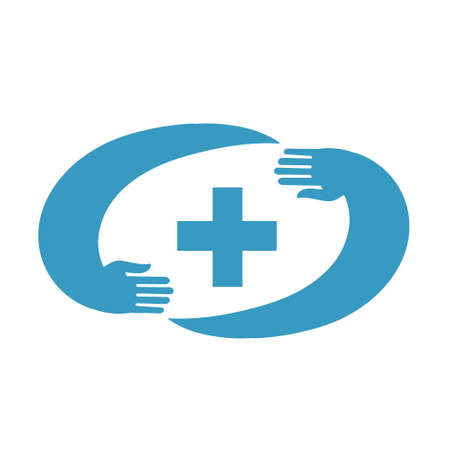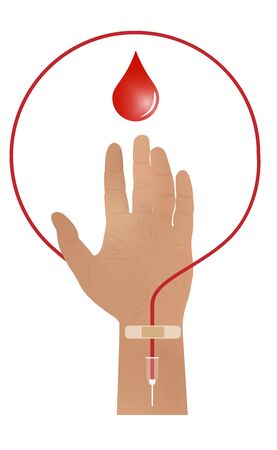Introduction to National Health Mission and Tele-Rehabilitation
India, being a country with vast diversity and a rapidly growing population, has always faced significant challenges in delivering quality healthcare services across its rural and urban regions. The National Health Mission (NHM), launched by the Government of India in 2013, plays a pivotal role in bridging these gaps by strengthening public health systems and ensuring accessible healthcare for all citizens, especially those living in underserved areas. In recent years, the emergence of tele-rehabilitation has marked a new milestone in Indias healthcare journey. Tele-rehabilitation leverages digital technology to provide rehabilitation services remotely, making it possible for individuals in remote villages and tier-2 or tier-3 cities to receive expert care without travelling long distances. This innovative approach aligns perfectly with NHM’s mission to achieve universal health coverage and equitable access. As India continues to embrace digital transformation in the health sector, the synergy between NHM initiatives and tele-rehabilitation platforms is shaping a more inclusive healthcare landscape, reflecting the needs and aspirations of the Indian population.
2. Tele-Rehabilitation: Opportunities and Challenges in India
Tele-rehabilitation has emerged as a game-changer within the Indian healthcare system, especially for remote and rural communities where access to quality rehabilitation services remains a significant challenge. The growing need for such services is driven by Indias vast geography, high population density, and the increasing prevalence of non-communicable diseases and disabilities. Tele-rehabilitation, powered by digital platforms and mobile technology, offers a ray of hope for millions who cannot travel long distances to urban centres for specialized care.
Opportunities Offered by Tele-Rehabilitation
The adoption of tele-rehabilitation under initiatives like the National Health Mission (NHM) is bridging the gap between urban medical expertise and rural patients. Some key benefits include:
| Opportunity | Description |
|---|---|
| Accessibility | Patients in remote villages can consult specialists from their homes or local health centres. |
| Cost-effectiveness | Reduces out-of-pocket expenses on travel and accommodation for both patients and families. |
| Continuity of Care | Facilitates regular follow-ups, monitoring, and adjustments to treatment plans through virtual sessions. |
| Cultural Relevance | Enables healthcare providers to deliver services in local languages and consider cultural sensitivities. |
| Capacity Building | Empowers grassroots health workers (like ASHAs) through training and real-time support from experts. |
Unique Challenges Across Rural India
Despite these advantages, several challenges persist in scaling up tele-rehabilitation:
- Digital Divide: Many rural areas still lack reliable internet connectivity, smartphones, or computers required for smooth tele-consultations.
- Awareness & Literacy: Limited awareness about tele-rehabilitation and low digital literacy among patients and some providers hinders widespread adoption.
- Cultural Barriers: Social stigma around disability, reluctance to seek help outside traditional systems, and gender dynamics can affect participation rates.
- Language Diversity: With over 20 official languages, delivering culturally sensitive care that resonates with each community is challenging.
- Regulatory & Privacy Concerns: Ensuring patient data privacy and complying with national health regulations require robust frameworks and ongoing monitoring.
The Road Ahead: Local Solutions for Indian Communities
The National Health Mission has an important role in creating tailored interventions that address these challenges. By collaborating with state governments, local NGOs, tech innovators, and community leaders, NHM can ensure tele-rehabilitation becomes both accessible and sustainable across Bharat. Addressing infrastructural gaps while promoting digital inclusion will be crucial for tele-rehabilitation to truly benefit every corner of India.

3. NHM’s Initiatives to Promote Tele-Rehabilitation
Strengthening Grassroots Healthcare through Digital Solutions
The National Health Mission (NHM) has been a torchbearer in integrating tele-rehabilitation within India’s healthcare framework, especially targeting the grassroots level. Recognising the vast rural population and geographical challenges, NHM has strategically adopted digital health solutions to bridge the gap between urban medical expertise and rural health needs. By leveraging telemedicine platforms, NHM enables patients with disabilities or those requiring post-acute care to access rehabilitation services from their local primary health centres (PHCs) and community health centres (CHCs).
Key Programmes Driving Tele-Rehabilitation
One of the flagship programmes under NHM is the implementation of the eSanjeevani platform, which facilitates doctor-to-patient and doctor-to-doctor consultations across states. This system allows physiotherapists, occupational therapists, and speech-language pathologists to provide real-time guidance to frontline workers like ASHAs (Accredited Social Health Activists), ANMs (Auxiliary Nurse Midwives), and even family members of patients at home. As a result, tele-rehabilitation becomes accessible even in remote villages, ensuring continuity of care and reducing out-of-pocket expenses for rural families.
Capacity Building and Training at the Community Level
NHM places strong emphasis on training grassroots health workers in basic rehabilitation protocols and digital literacy. Through regular workshops and e-learning modules, local healthcare providers are empowered to use tele-rehabilitation tools effectively. These capacity-building efforts ensure that the benefits of technology reach every corner of Bharat, making healthcare inclusive and equitable.
Policy Framework Supporting Tele-Rehabilitation
To institutionalise tele-rehabilitation services, NHM works closely with state health departments to frame guidelines that promote data privacy, standard operating procedures, and quality assurance mechanisms. The mission also encourages public-private partnerships to expand tele-rehab infrastructure, ensuring robust connectivity and accessibility.
Impact on Rural India: A Step Towards Atmanirbhar Bharat
The cumulative effect of NHM’s strategies is visible in improved patient outcomes, reduction in travel time for specialised care, and greater awareness about rehabilitation among rural populations. By promoting locally relevant innovations and community participation, NHM’s initiatives are not only strengthening healthcare delivery but also nurturing a spirit of self-reliance—truly embodying the vision of Atmanirbhar Bharat in the health sector.
4. Leveraging Digital India and Local Innovations
India’s journey towards widespread tele-rehabilitation has gained remarkable momentum through the synergy of the National Health Mission (NHM) and the Digital India initiative. The government’s drive to empower citizens digitally has made it possible to bridge rural-urban healthcare gaps, making advanced rehabilitation accessible even in remote corners of the country.
Digital India: A Game Changer in Tele-Rehabilitation
The Digital India mission, launched by the Government of India, focuses on transforming the nation into a digitally empowered society. This has led to robust internet connectivity, affordable smartphones, and e-governance platforms that form the backbone for tele-rehabilitation services. NHM leverages this digital infrastructure to deliver physiotherapy consultations, occupational therapy, and speech therapy directly to patients’ homes via telemedicine portals and mobile apps.
Importance of Local Language Solutions
One of the most significant challenges in India’s healthcare outreach is its linguistic diversity. NHM, supported by Digital India, addresses this by promoting local language interfaces in tele-rehabilitation platforms. These solutions ensure that patients from different regions feel comfortable and can communicate their concerns effectively, breaking down barriers caused by language.
| State/Region | Main Language | Tele-Rehabilitation Interface Language |
|---|---|---|
| Tamil Nadu | Tamil | Tamil & English |
| Maharashtra | Marathi | Marathi & Hindi |
| Bengal | Bengali | Bengali & English |
| Karnataka | Kannada | Kannada & English |
| Punjab | Punjabi | Punjabi & Hindi |
Culturally Relevant Technology Adaptations
Tele-rehabilitation success in India depends on more than just technology access; cultural adaptation is key. NHM works closely with local innovators and startups to develop culturally sensitive content—such as rehabilitation exercise videos demonstrating traditional Indian attire or home environments familiar to rural patients. Customised reminders using popular local idioms or festivals ensure that therapy adherence remains high.
Case Study: E-Sanjeevani Platform Adoption
The E-Sanjeevani platform, under Digital India, exemplifies how local innovations support tele-rehabilitation. With user-friendly interfaces in multiple Indian languages and features tailored for low-bandwidth rural areas, it has enabled thousands of Indians to receive continuous rehabilitation during and after the COVID-19 pandemic.
By combining cutting-edge digital infrastructure, inclusive language solutions, and culturally relevant adaptations, NHM strengthens tele-rehabilitation outreach across Bharat. This holistic approach ensures that every citizen, regardless of region or background, can access quality rehabilitation care from the comfort of their home.
5. Community Health Workers and Capacity Building
Empowering Grassroots: The Backbone of Tele-Rehabilitation
One of the most significant strengths of the National Health Mission (NHM) in India lies in its robust network of community health workers, including ASHAs (Accredited Social Health Activists), ANMs (Auxiliary Nurse Midwives), and other frontline staff. These dedicated individuals form the backbone of healthcare delivery at the grassroots level, especially in rural and remote areas where access to specialized services is limited. In the context of tele-rehabilitation, their role becomes even more crucial as they act as vital connectors between technology-driven solutions and beneficiaries who need rehabilitative care.
The Pivotal Role of ASHAs and ANMs
ASHAs and ANMs are often the first point of contact for people seeking healthcare in Indian villages. Their deep understanding of local languages, customs, and health-seeking behaviour allows them to bridge the gap between advanced tele-rehabilitation platforms and patients. By providing guidance, facilitating virtual consultations, and educating families on the use of digital tools, these workers ensure that no one is left behind due to technological barriers or lack of awareness.
Capacity Building: Training for Tomorrow
The NHM recognises that effective tele-rehabilitation depends on continuous capacity building. Regular training sessions are conducted to upskill ASHAs, ANMs, and other health workers in digital literacy, basic troubleshooting, data management, and patient counselling. This not only enhances their confidence but also ensures quality service delivery. Through a cascade model of training—where master trainers train district-level staff, who then mentor village-level workers—the NHM ensures uniform knowledge dissemination across states like Uttar Pradesh, Maharashtra, Tamil Nadu, and beyond.
Community Engagement & Sustainability
Community health workers are instrumental in mobilising local populations, building trust for tele-rehabilitation interventions, and dispelling myths about technology-based healthcare. Their credibility within communities helps drive acceptance and active participation in NHM initiatives. Moreover, by involving Panchayati Raj Institutions (PRIs), self-help groups (SHGs), and local influencers, they foster a sense of ownership that is key for long-term sustainability of tele-rehabilitation programmes across Bharat.
In summary, the NHM’s focus on empowering grassroots health workers has been central to scaling up tele-rehabilitation services across India. Through ongoing training, leveraging local knowledge, and fostering community engagement, ASHAs, ANMs, and their peers are ensuring that innovative rehabilitation care truly reaches every corner of the country.
6. Success Stories and Real-Life Impact
Transforming Lives through Tele-Rehabilitation: Inspiring Journeys from Across India
The National Health Mission’s push for tele-rehabilitation has created a wave of positive change across diverse Indian communities, both urban and rural. Several states have emerged as role models, using digital health solutions to bridge the gap between rehabilitation specialists and patients who otherwise would have limited access to care.
Karnataka: Empowering Rural Mobility
In Karnataka’s Mandya district, the introduction of tele-rehabilitation sessions for stroke survivors has been a game-changer. Through NHM-supported initiatives, physiotherapists connect via video calls, guiding patients and their caregivers on exercises that can be done at home. For Lakshmi Devi, a 58-year-old farmer’s wife, this service meant she could recover mobility without expensive travel to city hospitals. Today, she walks independently in her fields—a testament to the program’s impact.
Punjab: Inclusive Care for Children with Disabilities
Punjab’s government schools in Ludhiana integrated tele-rehabilitation for children with cerebral palsy under the Rashtriya Bal Swasthya Karyakram (RBSK), part of NHM. Special educators and therapists conduct regular virtual sessions, involving parents in therapy routines. This approach not only improved attendance but also empowered families with knowledge to continue interventions at home, significantly improving developmental outcomes for these children.
Maharashtra: Breaking Barriers for Senior Citizens
Senior citizens in Nagpur benefited from NHM’s collaboration with local NGOs and PHCs to provide tele-rehabilitation for age-related mobility issues and post-surgical recovery. Elderly patients like Mr. Ramesh Patil share how weekly online consultations helped them regain strength, reduce pain, and manage chronic conditions—all while staying close to their families and communities.
Wider Community Benefits
The success stories do not end with individuals; entire communities have seen improvements. Tele-rehabilitation initiatives have led to greater awareness about disability rights and rehabilitation options in local languages such as Hindi, Kannada, Punjabi, and Marathi. Health workers report better engagement and follow-up rates among patients who previously dropped out due to distance or financial constraints.
Cultural Sensitivity and Local Adaptation
NHM’s tele-rehabilitation programs are designed with an understanding of cultural nuances—using familiar terms like “sewa” (service) and “parivar sahayata” (family support) during counselling sessions makes clients feel more comfortable. By respecting traditional family structures and collaborating closely with ASHA workers, these programmes ensure that care is both accessible and acceptable within typical Indian settings.
These real-life success stories highlight the transformative power of tele-rehabilitation under the National Health Mission. By leveraging technology rooted in Indian realities, NHM continues to enable millions to live healthier, more independent lives—one inspiring journey at a time.
7. Way Forward: Recommendations and Future Prospects
To further strengthen tele-rehabilitation under the National Health Mission (NHM), a strategic and culturally-sensitive approach is essential. Based on expert insights and current policy discussions, several key recommendations can be implemented to ensure the sustainability and wider reach of tele-rehabilitation services across India.
Enhancing Digital Infrastructure
First and foremost, improving digital connectivity in rural and remote areas remains paramount. The NHM should collaborate with both public and private sectors to bridge the digital divide by expanding high-speed internet access, providing affordable smartphones or tablets, and creating user-friendly platforms compatible with local languages and dialects. This will make tele-rehabilitation accessible for every Indian, regardless of their geographic location.
Capacity Building for Healthcare Providers
Continuous training programmes for doctors, physiotherapists, occupational therapists, and community health workers are crucial. By incorporating tele-rehabilitation modules into existing training under NHM, healthcare providers can develop competencies in virtual assessment, remote monitoring, and culturally-appropriate patient engagement. Special focus should be given to understanding local customs and beliefs about rehabilitation.
Community Awareness and Participation
Increasing awareness among beneficiaries is vital for uptake. Culturally-tailored IEC (Information, Education & Communication) campaigns in regional languages can help demystify tele-rehabilitation services. Involving Panchayati Raj Institutions, ASHAs (Accredited Social Health Activists), and other grassroots workers will foster trust within communities, ensuring that tele-rehabilitation is seen as a reliable solution.
Policy Integration and Sustainable Funding
The Government of India should integrate tele-rehabilitation as a core component of NHM policies. Dedicated budgetary allocations are needed to support technology procurement, maintenance, staff salaries, and research on innovative service models. Long-term sustainability can be achieved through public-private partnerships and CSR (Corporate Social Responsibility) initiatives targeting rehabilitation technology.
Monitoring, Evaluation, and Innovation
Establishing robust monitoring and evaluation frameworks is necessary to measure the impact of tele-rehabilitation initiatives under NHM. Regular feedback from users and stakeholders should inform programme adjustments. Encouraging innovation through pilot projects—such as AI-based rehabilitation tools or gamified therapy sessions—can further enhance outcomes.
The Road Ahead
The future of tele-rehabilitation in India is promising if supported by visionary leadership under NHM. By empowering communities, strengthening infrastructure, investing in capacity building, and fostering innovation, India can set a global example for inclusive healthcare delivery. With sustained efforts and commitment from all stakeholders, tele-rehabilitation will not only address immediate needs but also pave the way for a healthier Bharat.


